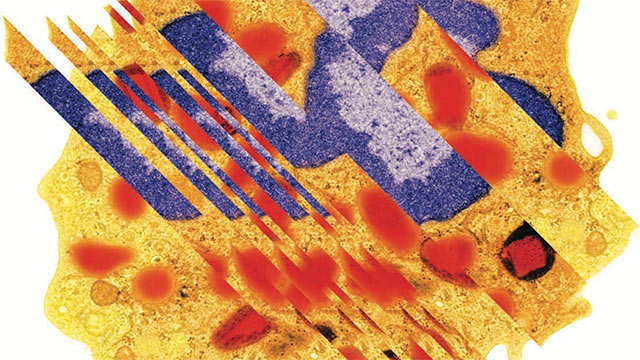Spanning projects such as engineering trees that provide fire-resistant lumber to modifying organs that can’t be rejected by the human body, the field of engineering biology is undoubtedly poised to transform our everyday lives.
But turning the field’s potential into real, implementable solutions will take a coordinated effort among researchers, funders, policymakers, government agencies and other stakeholders.
To meet this need, the Engineering Biology Research Consortium (EBRC) today (June 19) released a new, technical roadmap that lays out a path for achieving the promise of engineering biology, or synthetic biology. Serving as a guide for the engineering biology community, the plan outlines research priorities as well as potential outcomes and challenges.
Intended to evolve in response to unexpected developments in the field, the roadmap also will guide investments by all government agencies, including the Department of Energy, Department of Defense, National Institutes of Health and National Science Foundation.

“With this technical roadmap, we have charted a course to elevate the impact of engineering biology on society and the economy,” said Northwestern University’s Michael Jewett, a member of the EBRC Roadmapping Working Group.
Jewett is a professor of chemical and biological engineering at Northwestern’s McCormick School of Engineering and co-director of the Center for Synthetic Biology.
Other Northwestern contributors include Julius Lucks, Joshua Leonard and Danielle Tullman-Ercek, who are also all members of the Center for Synthetic Biology and McCormick’s chemical and biological engineering department. They joined a team of more than 80 scientists and engineers from more than 30 universities and a dozen companies to develop the roadmap.
Synthetic biology uses tools and concepts from biology, physics, engineering and computer science to build new biological systems. Much of synthetic biology research focuses on reprogramming cells by changing their DNA. Once reprogrammed, cells can take on new, specialized purposes, such as manufacturing sustainable chemicals, next-generation materials, or targeted therapeutics.
“Born out of the 1990s genomics revolution, synthetic biology has emerged as one of the most exciting and promising fields of research for the next century,” Jewett said. “Over the past decade, experts in this field have made remarkable advances in creating, controlling and reprogramming cellular behavior, and the roadmap provides strategies on how to go even further — how to make a bigger impact. For example, it describes key steps to develop on-demand, cell-free biomanufacturing strategies for increasing access to medicines where people need them the most.”
“One of the most important things about the roadmap is that it charts an integrated national strategy for an entire community of researchers,” Lucks said. “The most exciting discoveries are at the interface of disciplines and labs, which is naturally reflected throughout the roadmap.”
According to the new plan, strong government investments in engineering biology will ultimately improve public health, food crops, the environment and the economy. It will also anchor the United States’ leadership in this area of research.
“The question for government is: If all of these avenues are now open for biotechnology development, how does the U.S. stay ahead in those developments as a country?” said Douglas Friedman, a leader on the roadmap project and executive director of the EBRC. “This field has the ability to be truly impactful for society, and we need to identify engineering biology as a national priority, organize around that national priority and take action based on it.”
Toward this goal, Northwestern has already made synthetic biology a priority through the 2016 creation of the Center of Synthetic Biology, which has made targeted investments in recruiting established and promising young faculty in the field and by allocating space in the newly unveiled Simpson Querrey Biomedical Research Center.
The newly released roadmap supports U.S. Congress’s Engineering Biology Research and Development Act of 2019, which aims to “provide for a coordinated federal research program to ensured continued United States leadership in engineering biology.” The initiative was introduced after China and the United Kingdom made significant commitments to the field.
The EBRC is a public-private partnership partially funded by the National Science Foundation and centered at the University of California, Berkeley.


